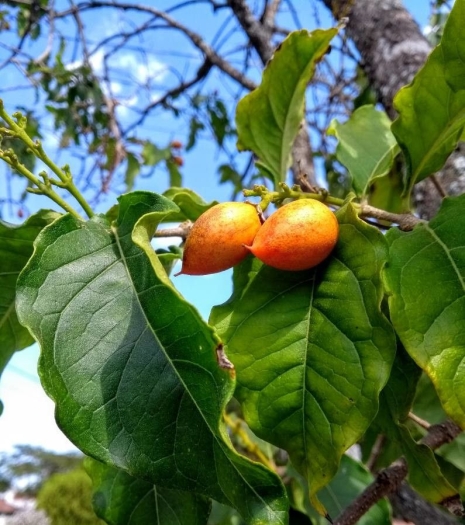Peanut Butter Tree
(Bunchosia armeniaca)
Peanut Butter Tree (Bunchosia armeniaca)
/
/

JP Corrêa Carvalho
CC BY-SA 4.0
Image By:
JP Corrêa Carvalho
Recorded By:
Copyright:
CC BY-SA 4.0
Copyright Notice:
Photo by: JP Corrêa Carvalho | License Type: CC BY-SA 4.0 | License URL: https://creativecommons.org/licenses/by-sa/4.0/ | Attribution: JP Corrêa Carvalho (cc-by-sa) | Rights Holder: JP Corrêa Carvalho | Publisher: PlantNet | Date Created: 2020-07-23T13:00:34Z | Title: Bunchosia armeniaca (Cav.) DC.: fruit | Notes: |









Estimated Native Range
Summary
Bunchosia armeniaca, commonly known as Peanut Butter Tree, is an evergreen tree native to tropical dry forests and moist forests in Northwestern South America, including countries like Colombia and Venezuela. It typically grows to a height of 15-35 feet and a width of 10-12 feet. The tree has a spreading habit with dense foliage and can be multi-stemmed. Its leaves are simple, alternate, and dark green. The Peanut Butter Tree is notable for its yellow flowers that bloom in the spring, summer, and fall, attracting pollinators. The flowers are small but numerous, creating a showy display. After flowering, it produces distinctive fruits that are initially creamy-green, turning to red as they ripen. The fruit has a sweet taste and a texture reminiscent of peanut butter, hence the common name. However, the two seeds within each berry are toxic and should not be consumed.
The Peanut Butter Tree is valued for its ornamental qualities, including its lush foliage and bright fruits. It is used in tropical and subtropical gardens for fruit production and as an attractive specimen or shade tree. In cultivation, it prefers full sun but can tolerate partial shade. It requires medium amounts of water and can adapt to a range of soil drainage conditions, from slow to fast. While the fruit is a unique feature, it is important to harvest it before it overripens on the tree to avoid spoilage. The fruit is often picked while still green and allowed to ripen indoors to a red color. Gardeners should be aware of the poisonous seeds and handle the fruit with care.CC BY-SA 4.0
The Peanut Butter Tree is valued for its ornamental qualities, including its lush foliage and bright fruits. It is used in tropical and subtropical gardens for fruit production and as an attractive specimen or shade tree. In cultivation, it prefers full sun but can tolerate partial shade. It requires medium amounts of water and can adapt to a range of soil drainage conditions, from slow to fast. While the fruit is a unique feature, it is important to harvest it before it overripens on the tree to avoid spoilage. The fruit is often picked while still green and allowed to ripen indoors to a red color. Gardeners should be aware of the poisonous seeds and handle the fruit with care.CC BY-SA 4.0
Plant Description
- Plant Type: Tree, Shrub
- Height: 15-35 feet
- Width: 10-12 feet
- Growth Rate: Moderate
- Flower Color: Yellow
- Flowering Season: Spring, Summer, Fall
- Leaf Retention: Evergreen
Growth Requirements
- Sun: Full Sun
- Water: Medium
- Drainage: Slow, Medium, Fast
Common Uses
Bird Garden, Butterfly Garden, Edible*Disclaimer: Easyscape's listed plant edibility is for informational use. Always verify the safety and proper identification of any plant before consumption., Low Maintenance, Potted Plant
Natural Habitat
Tropical dry forests and moist forests
Other Names
Common Names: Monk’s Plum, Cansaboca, Peanut Butter Fruit, Peruvian Plume, Ciruela De Fraile, Guaimaro, Indano, Cold-Earth Mame, Ameixa Do Peru, Cereza
Scientific Names: , Bunchosia armeniaca, Bunchosia armeniaca f. systyla, Malpighia armeniaca, Bunchosia armeniaca f. parvifolia, Byrsonima nitida,
GBIF Accepted Name: Bunchosia armeniaca (Cav.) Rich.